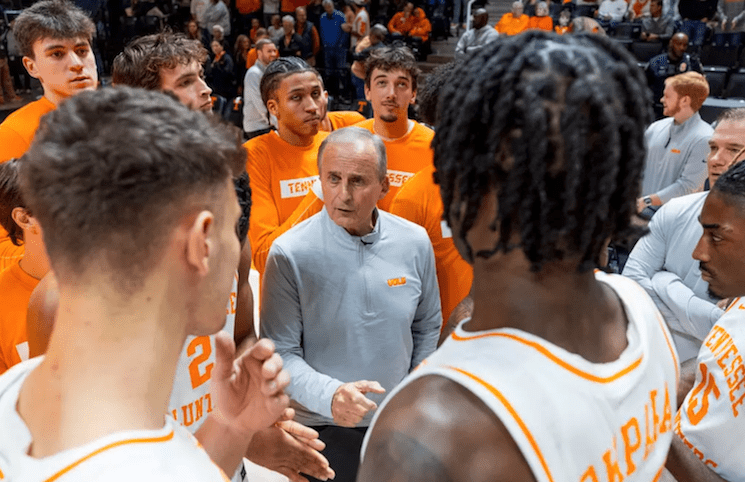
All recruiting rankings are via the 247Sports Composite rankings
Recruiting in the SEC is a tough business. A team can finish in the top 15 nationally with their recruiting class and still place in the middle of the pack in the SEC. Tennessee learned that the hard way in both their 2016 and 2017 classes.
The Vols have consistently been one of the better recruiting programs in the country. But how have they compared to their main competition, the other schools in the SEC?
Tennessee has finished 10th, 5th, 2nd, 7th, and 7th in the SEC in the five recruiting classes since Butch Jones took over as head coach in December of 2012. That’s an average ranking of 6.2 in the SEC. In that same stretch, the Vols averaged a finish of 13.2 nationally.
The Vols have averaged a top-15 recruiting class nationally but have barely averaged a finish in the top half of the SEC in that same time. That’s what it’s like to recruit in the SEC.
But mere rankings alone don’t tell the whole story. How do the Vols stack up to the rest of the SEC when it comes to the amount of talent on their roster?
Collections of four and five-star players are what separate good teams from great teams. In order to figure out who had the most talent in the SEC and how other schools compared to one another, I totaled up the number of five-star and four-star players all 14 SEC schools brought in from the 2013 recruiting cycle up to the 2016 cycle. After that, I multiplied the total of five-star recruits in that span by five and the total of four-star recruits by four and totaled those numbers together to place a numerical value on a team’s talent total in 2016. The actual numbers will, of course, be slightly different than my calculations because of roster attrition for every school, but this serves as an estimate measurement for all schools.
Coming into the 2016 season, Tennessee had recruited 45 four-star players and one five-star prospect in the four recruiting class (2013-16) prior to that season. Of course, some of those players were no longer on the roster because of attrition, but those are essentially the numbers the Vols had on their team when taking the field in 2016 before injuries or more roster movement happened.
Tennessee’s 2016 roster, according to the data I compiled, was the sixth-most talented roster in the SEC in 2016. They had the second-most talented roster in the SEC East behind only Georgia.
Unsurprisingly, Alabama had the most talented roster in the SEC heading into the 2016 season. With approximately 20 five-stars and 56 four-stars on the roster, no other team was even close to matching the Tide’s talent pool. So it’s no surprises that Alabama was one of the two teams to make it to the SEC Championship Game and would go on to make yet another appearance in the National Championship Game. Florida, the other team that fought for the conference title, wasn’t one of the most talented teams in the conference according to recruiting rankings. The Gators finished third in the East behind Georgia and Tennessee when it came to talent, yet they bested both for the division title.
Here’s the breakdown of the rosters of all 14 SEC teams heading into the 2016 season:
- Alabama – 324 (20 five-stars, 56 four-stars)
- LSU – 276 (8 five-stars, 59 four-stars)
- Auburn – 239 (7 five-stars, 51 four-stars)
- Georgia – 228 (8 five-stars, 47 four-stars)
- Texas A&M – 210 (6 five-stars, 45 four-stars)
- Tennessee – 185 (1 five star, 45 four-stars)
- Ole Miss – 163 (7 five-stars, 32 four-stars)
- Florida – 157 (5 five-stars, 33 four-stars)
- South Carolina – 120 (0 five-stars, 30 four-stars)
- Arkansas – 85 (1 five-star, 20 four-stars)
- Mississippi State – 78 (2 five-stars, 17 four-stars)
- Kentucky – 56 (0 five-stars, 14 four-stars)
- Missouri – 41 (1 five-star, 9 four-stars)
- Vanderbilt – 40 (0 five stars, 10 four-stars)
These numbers show who, more or less, played up to their talent level, who under-performed, and who exceeded expectations in 2016. Despite having the second-best talent in the SEC, LSU couldn’t even finish second in their division. Georgia and Tennessee had the most talent in the East, but both finished with the same conference record (4-4) as Kentucky, who had the 12th ranked talent pool in the SEC.
But the 2016 season is old news now. How do the SEC rosters look heading into the 2017 season?
With the 2017 signing classes in the books and the 2013 classes all graduated or moved on by now, the SEC talent rankings have shifted. Alabama, once again, brought in the top class in the conference and made themselves even more talented. But there was plenty of movement beneath them. How do the Vols stack up against the rest of the SEC heading into this season? Are they still one of the more talented teams in the SEC East?
Here’s how the 2017 rosters look after National Signing Day:
- Alabama – 355 (23 five-stars, 60 four-stars)
- LSU – 267 (7 five-stars, 58 four-stars)
- Georgia – 255 (7 five-stars, 55 four-stars)
- Auburn – 231 (7 five-stars, 49 four-stars)
- Texas A&M – 214 (6 five-stars, 46 four-stars)
- Tennessee – 166 (2 five-stars, 39 four-stars)
- Florida – 165 (5 five-stars, 35 four-stars)
- South Carolina – 120 (0 five-stars, 30 four-stars)
- Ole Miss – 112 (4 five-stars, 23 four-stars)
- Mississippi State – 77 (1 five-star, 18 four-stars)
- Arkansas – 76 (0 five-stars, 19 four-stars)
- Kentucky – 60 (0 five-stars, 15 four-stars)
- Vanderbilt – 36 (0 five-stars, 9 four-stars)
- Missouri – 33 (1 five-star, 7 four-stars)
As you can see, the Vols remain the second-most talented team in the East. But Georgia jumped Auburn for the third-most talented team in the SEC and upgraded their talent significantly while Florida closed the gap to a negligible margin behind Tennessee. The Gators and Vols essentially have the same amount of talent on their roster heading into the 2017 season.
The Vols have consistently finished with some of the top recruiting classes in the nation over the past few seasons. But that means little in the SEC unless you can recruit at an elite level consistently. Tennessee has the talent to compete for a division title and possibly enough to compete for a conference title, but players aren’t the full story. Good coaching and development can help teams overcome talent disparities while bad coaching and poor development can cause a team to fall short of expectations.
Tennessee largely lived up to expectations until last season. They have the talent to bounce back in 2017, but they have even fiercer competition in their own division now. The division won’t be as open as it was in 2016, which means Tennessee’s coaching will have to step up if the Vols want an SEC East crown.



